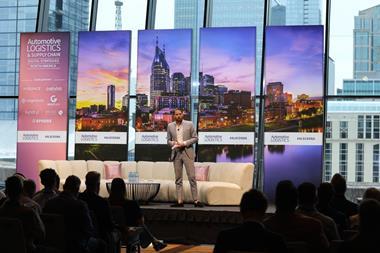
Russia has signed a free-trade deal with seven former Soviet republics that will remove import and export tariffs on a range of goods that are more than likely to include vehicles and automotive parts.
The deal was signed at the recent summit of the Commonwealth of Independent States (CIS) and involved Ukraine, Belarus, Kazakhstan, Armenia, Kyrgyzstan, Moldova and Tajikistan. The remaining three CIS nations – Uzbekistan, Azerbaijan and Turkmenistan – refrained from signing the deal but indicated they may do so before the end of the year.
The agreement needs to be ratified by the parliaments of the eight countries already signed up in order to go into effect in 2012.
Prime minister Vladimir Putin said that the deal would make the collective economies of all eight states more competitive.
While tariff exemptions on vehicles and parts are still to be defined, the strong support the Russian government is giving automotive production suggests that tariff decreases could be introduced. According to Vitaly Belskiy and Dominik Buszta, consultants in Automotive & Transportation at Frost and Sullivan, Russian OEMs are expected to get easier access to the CIS automotive markets if tariffs are significantly decreased. “[This] would be specifically important if these economies move into the second wave of the economic crisis,” they said.
According to figures from Frost and Sullivan, Russian vehicle exports to other CIS members in the first half of 2011 accounted for more than $249m, while it imported almost $434m worth of cars and trucks during the same period from its CIS neighbours. Total trade volumes between Russia and the CIS nations for the first half of the year amounted to $60 billion.
These figures are roughly in line with figures for 2010 when car and truck exports from Russia to CIS countries accounted for 0.5% (0.6% H1 2011) of total export trade from Russia to CIS, while imports accounted for 2.1% (2% H1 2011) of the total trade.
Uzbekistan, so far not part of the pact, would potentially one of the more important members for automotive exports to Russia. GM Uzbekistan, an important factory in the carmaker’s CIS strategy, reported saw exports to Russia rise 36% to 54,000 units in the January-July period of 2011 compared to 2010.
Belskiy and Buszta said that OEMs building in Ukraine and exporting to Russia might benefit once the tariff exemptions are put into effect, though the significance of vehicle movements between the two countries has been called in question elsewhere, largely because of corruption on transit routes through the country.
“OEMs are looking very hard at alternative routes to avoid the Ukrainian transit routes as thy all involve pay offs to corrupt Ukrainian customs officials at the borders,” said Alexander Rogan, director of CIS at emergency logistics provider Priority Freight. “What volumes there are, are set to reduce,” he told Automotive Logistics, adding that the situation was unlikely to change unless Russia takes control of the Ukrainian borders.
However, according to Frost and Sullivan, Ukrainian and Kazakh logistics service providers are likely to benefit in the long term thanks to competitive costs. “Increasing competition between LSPs should lead to higher service quality and lower prices offered to OEMs,” said Belskiy and Buszta.
That said, as volumes rebuild in Russia, transport and capacity challenges are expected given the limited resources available to support the latest influx of manufacturers and tier suppliers. Logistics providers also continue to suffer delays as a result of slow customs clearance and other Russian industrial policy measures that seek to limit imports.
Customs Union expansion?
The new free trade deal should not conflict with certain states’ membership of the World Trade Organisation as long as external tariffs are not increased. According to WTO rules, countries are allowed to set up free-trade agreements in some cases as long as they do not discriminate against goods movements from outside the agreement zone.
Armenia, Kyrgyzstan, Moldova and Ukraine are members of the WTO. What could give rise to conflict would be any development beyond the current agreement toward an extension of the current Customs Union between Russia, Belarus and Kazakhstan.
Vladimir Zharikhin, deputy director of the CIS Institute, has already suggested that such an expansion could be part of Russia’s agenda, describing the new signing as “an anteroom for the Customs Union”.
Any move towards expansion of the current union would entail significantly higher integration between the member states and accession would bring complications for those WTO members linking with non-WTO members, including Russia, Belarus and Kazakhstan.
For Rogan the ‘anteroom’ comment is appropriate as Vladimir Putin, the prime minister, pursues a path toward a Eurasian Economic Union via an extension of the current Customs Union to include former Soviet Republics.
“If Russia gets Ukraine to join the EEU and the Customs Union it will have successfully fought off US and EU attempts to win Ukraine over to the West and to have kept NATO and the EU at a comfortable distance from Russian borders,” he said.
Ukraine has been seeking closer ties with the EU but recent accusations that the trial of Yulia Tymoshneko, the former prime minister, was politically motivated have led to a degree of antipathy. Added to this, the current government of president Viktor Yanukovych is seen as being more pro-Russian that his predecessor and Ukraine’s inclusion in the new agreement is seen as significant.





































